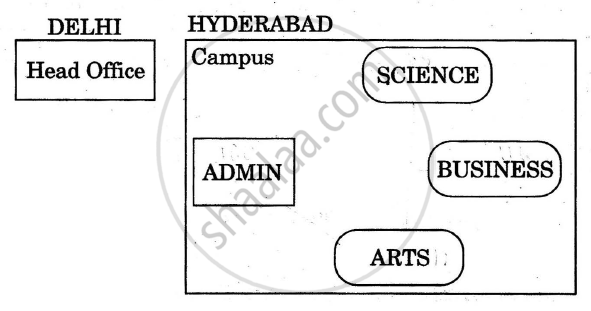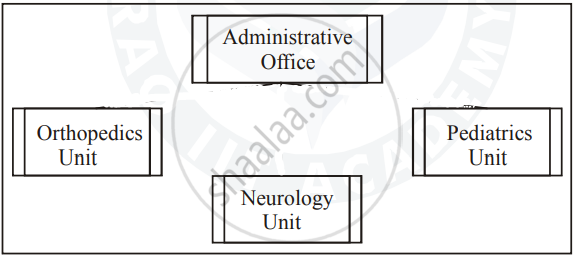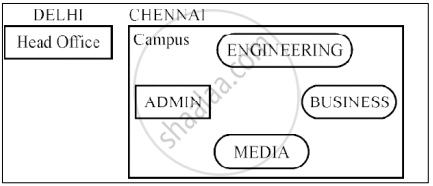Topics
Exceptional Handling in Python
- Introduction of Exception Handling in Python
- Syntax Errors
- Exceptions
- Built-in Exceptions
- Raising Exceptions
- Handling Exceptions
- Finally Clause
- Types of Function
- Creating User Defined Function
- Arguments and Parameters
- Default Parameters
- Positional Parameters
- Function Returning Values
- Flow of Execution
- Scope of a Variable
- Class 11 Revision
Unit 1: Computational Thinking and Programming
Object Oriented Programming with Python
- Concept of Object Oriented Programming with Python
- Data Hiding in Python
- Data Encapsulation in Python
- Class and Object in Python
- Polymorphism in Python
- Inheritance in Python
- Advantages of Object Oriented Programming Over Earlier Programming Methodologies in Python
- Defining Classes (Attributes, Methods)
- Creating Instance Objects
- Accessing Attributes and Methods
- Using Built in Class Attributes (Dict, Doc, Name, Module, Bases)
- Constructor(_Init()_ _, _ _Del()_ _ and _ _ Str()_ _) Methods in a Class
- Private Attributes (Limited Support)
- Importance of "Self" (Acts as a Pointer to Current Calling Object) Operator Overloading with Methods
- Concept of Base Class and Derived Class
- Single, Multilevel and Multiple Inheritance
- Overriding Methods
- Using Super() in Derived Class to Invoke _ _Init()_ _ Or Overridden Methods of Parent Class
Unit 2: Database Management
File Handling in Python
- Introduction to Files
- Types of Files in Python
- Types of Path in Python
- Opening and Closing a Text Files
- Text File Open Modes
- Writing to a Text File
- Reading from a Text File
- Setting Offsets in a File
- Creating and Traversing a Text File (Data Manipulation)
- The Pickle Module
- Opening and Closing a Binary File in Python
- Binary File Open Modes
- Writing to a Binary File
- Reading from a Binary File
- Appending in a Binary Files
- Searching a Binary File
- Update Operations in a Binary File
- Import CSV Module
- Opening and Closing a CSV File in Python
- Read and Write a CSV File Using Python
Advance Programming with Python
- Linear List Manipulation
- Sequential Allocation
- Traversal
- Insertion of an Element in a Sorted List
- Deletion of an Element from the List
- Searching in Data Structure
- Sorting in Data Structure
- Converting Expressions from INFIX to POSTFIX Notation and Evaluation of Postfix Expression in Python
- Queues (List Implementation)
- Stack and Queue in Data Structure
- Operations on Queue (INSERT and DELETE) and Its Implementation in Python
- Need for Data File in Python
- Types of Files in Python
- Opening and Closing a Text Files
- Access Modes (Output, Input, Default)
- File Object
- Reading and Writing a File - Read(), Readline(), Readlines(), Write(), Writelines
- File Positions (Seek(), Tell())
- Renaming and Deleting a File.,Flush()
- Searching for Particular Data from a File
- Insertion and Deletion of Data from an Already Existing File
- Modification of Data in File
- Error and Exceptions - NameError, IndexError, TypeError, IO Error, ImportError, ValueError, EOFError
- Generator Function Using Yield
Python - Databases and SQL
- Introduction to Database Concepts
- Relational Data Model
- Relational Algebra
- Structured Query Language Advantages of Using SQL
- Data Definition Language and Data Manipulation Language
- Data Types - NUMBER/DECIMAL, CHARACTER/VARCHAR/VARCHAR2, DATE
- SQL COMMANDS - CREATE TABLE, DROP TABLE, ALTER TABLE, UPDATE ….SET…., INSERT, DELETE; SELECT, DISTINCT, FROM, WHERE, IN, BETWEEN, GROUP BY, HAVING, ORDER BY
- Functions in SQL
- Obtaining Results (Select Query) from 2 Tables Using equi-join
- Cartesian Product and Union
Unit 3: Computer Networks
Stack
- Stack and Queue in Data Structure
- Notations for Arithmetic Expressions
- Conversion from Infix to Postfix Notation
- Evaluation of Postfix Expression
Python - Boolean Algebra
- Binary-valued Quantities
- Boolean Variable
- Boolean Constant and Boolean Operators - AND, OR, NOT
- Truth Tables (Boolean Algebra)
- Closure Property
- Commutative Law
- Associative Law
- Identity Law
- Inverse Law
- Principle of Duality
- Idempotent Law
- Distributive Law
- Absorption Law
- Involution Law
- DeMorgan’S Law/Theorem and Their Applications
- Obtaining Sum of Product (SOP) and Product of Sum (POS) Form the Truth Table
- Reducing Boolean Expression (SOP and POS) to Its Minimal Form
- Use of Karnaugh Map for Minimization of Boolean Expressions (Up to 4 Variables)
- Application of Boolean Logic - Digital Electronic Circuit Design Using Basic Logic Gates (NOT, AND, OR, NAND, NOR)
- Use of Boolean Operators (NOT, AND, OR) in SQL SELECT Statements
- Use of Boolean Operators (AND, OR) in Search Engine Queries
Queue
- Stack and Queue in Data Structure
- Introduction to Deque
- Implementation of Deque Using Python
Project
Sorting
- Sorting in Data Structure
- Bubble Sort
- Selection Sort
- Insertion Sort
- Time Complexity of Algorithms
Python - Communication Technologies
- Evolution of Networking
- ARPANET
- Internet
- Interspace Different Ways of Sending Data Across the Network with Reference to Switching Techniques (Circuit and Packet Switching)
- Data Communication Terminologies
- Concept of Channel
- Bandwidth (Hz, KHz, MHz) and Data Transfer Rate (Bps, Kbps, Mbps, Gbps, Tbps)
- Twisted Pair Cable
- Coaxial Cable
- Optical Fiber
- Infrared
- Radio Link
- Microwave Link
- Satellite Link
- Network Devices
- Networking Topologies
- Network Protocol - TCP/IP (Transmission Control Protocol/Internet Protocol)
- Network Protocol - FTP (File Transfer Protocol)
- Network Protocol - Point to Point Protocol (PPP)
- Network Protocol - SMTP (Simple Mail Transfer Protocol)
- Network Protocol - POP3 Remote Login (Talent)
- Internet Wireless/Mobile Communication Protocol - GSM, CDMA, GPRS, and WLL
- Mobile Telecommunication Technologies
- Mobile Processors
- Electronic Mail Protocols Such as SMTP, POP3
- Protocols for Chat and Video Conferencing VOIP
- Wireless Technologies Such as Wi-Fi and WiMax
- Network Threats and Its Prevention
- Cookies
- Protection Using Firewall
- https
- India IT Act
- Cyber Law
- Cyber Crimes
- IPR Issues
- Hackers and Crackers (Hacking)
- World Wide Web (WWW)
- Hyper Text Markup Language (HTML)
- Extensible Markup Language (XML)
- Hyper Text Transfer Protocol (HTTP)
- Network Protocol – DNS (Domain Name System)
- Uniform Resource Locator (URL)
- Website
- Web Browser
- Web Servers
- Web Hosting
- Web Scripting - Client Side (VB Script, Java Script, PHP)
- Server Side (ASP, JSP, PHP)
- Web 2.0 (For Social Networking)
- E-commerce Payment Transactions Using Online Banking
- Mobile Banking and Payment Apps and Services
Searching
- Searching in Data Structure
- Linear Search
- Binary Search
- Search by Hashing
Understanding Data
- Introduction to Data
- Importance of Data
- Types of Data
- Data Collection
- Data Storage
- Data Processing
- Statistical Techniques for Data Processing
- Measures of Central Tendency for Data Processing
- Measures of Variability
Database Concepts
- Introduction to Database Concepts
- File System
- Limitations of a File System
- Database Management System Software (DBMS)
- Applications of DBMS
- File System to Database Management System (DBMS)
- Key Concepts in Database Management System (DBMS)
- Relational Data Model
- Terminologies in Relational Data Model
- Properties of a Relational Data Model
- Keys in a Relational Database
Structured Query language (SQL)
- Introduction of Structured Query Language (SQL)
- Structured Query Language (SQL)
- Data Types and Constraints in MySQL
- SQL for Data Definition
- SQL for Data Manipulation
- SQL for Data Query
- Data Updation and Deletion
- Functions in SQL
- GROUP BY Clause in SQL
- Operations on Relations
- Using Two Relations in Query
- Connecting SQL with Python
- Performing Insert, Update, Delete Queries Using Cursor
- Display Data by Using Fetchone(), Fetchall(), Rowcount
- Creating Database Connectivity Applications
Computer Networks
- Introduction to Computer Networks
- Evolution of Networking
- Types of Networks
- Network Devices
- Networking Topologies
- Types of Networking Topologies
- Identifying Nodes in a Networked Communication
- Internet, Web and the Internet of Things
- Network Protocol – DNS (Domain Name System)
- Hyper Text Markup Language (HTML)
- Extensible Markup Language (XML)
- Website
- Web Browser
- Web Servers
- Web Hosting
- Uniform Resource Locator (URL)
Data Communication
- Concept of Data Communication
- Components of Data Communication
- Measuring Capacity of Communication Media
- Types of Data Communication
- Switching Techniques
- Transmission Media
- Transmission Media
- Mobile Telecommunication Technologies
- Network Protocol
- Network protocols - HTTP (HyperText Transfer Protocol)
- Network Protocol - FTP (File Transfer Protocol)
- Network Protocol - Point to Point Protocol (PPP)
- Network Protocol - SMTP (Simple Mail Transfer Protocol)
- Network Protocol - TCP/IP (Transmission Control Protocol/Internet Protocol)
Security Aspects
- Network Threats and Its Prevention
- Malware
- Antivirus
- Spam
- HTTP vs HTTPS
- Protection Using Firewall
- Cookies
- Hackers and Crackers (Hacking)
- Network Security
Project Based Learning
- Introduction of Project Based Learning
- Approaches for Solving Projects
- Teamwork
- Components of Teamwork
- Project Description
- Mesh Topology
- Ring Topology
- Bus Topology
- Star Topology
- Tree or Hybrid Topology
Shaalaa.com | Bus Topology
Related QuestionsVIEW ALL [39]
Xcelencia Edu Services Ltd. is an educational organization. It is planning to set up its India campus at Hyderabad with its head office at Delhi. The Hyderabad campus has 4 main
buildings ADMIN, SCIENCE, BUSINESS and ARTS.
You as a network expert have to suggest the best network related . solutions for their problems raised in (i) to (iv), keeping in mind the distances between the buildings and other given parameters.

Shortest distances between various buildings :
| ADMIN to SCIENCE | 65m |
| ADMIN to BUSINESS | 100m |
| ADMIN to ARTS | 60m |
| SCIENCE to BUSINESS | 75m |
| SCIENCE to ARTS | 60m |
| BUSINESS to ARTS | 50m |
| DELHI Head Office to HYDERABAD Campus | 1600Km |
Number of computers installed at various buildings are as follows :
| ADMIN | 100 |
| SCIENCE | 85 |
| BUSSINESS | 40 |
| ARTS | 12 |
| DELHI Head Office | 20 |
1) Suggest the most appropriate location of the server inside the HYDERABAD campus (out of the 4 buildingakto get the best connectivity for maximum number of computers. Justify your answer
2) Suggest . and draw the cable layout to efficiently connect various buildings within the HYDERABAD campus for connecting the computers.
3) Which hardware device will you suggest to be procured by the company to be installed to protect and control the internet uses within the campus?
4) Which of the following will you suggest to establish the online face-to-face communication between the people in the Admin Office of HYDERABAD campus and · DELHI Head Office ?
- Text Chat
- Video Conferencing
- Cable TV
CASE STUDY BASED QUESTION
Ayurveda Training Educational Institute is setting up its centre in Hyderabad with four specialised departments for Orthopedics, Neurology and Pediatrics along with an administrative office in separate buildings. The physical distance between these department buildings and the number of computers to be installed in these departments and administrative office are given as follows.
Shortest distance between various locations in meters:
| Administrative Office to Orthopedics Unit | 55 |
| Neurology Unit to Administrative Office | 30 |
| Orthopedics Units to Neurology Unit | 70 |
| Pediatrics Unit to Neurology Unit | 50 |
| Pediatrics Unit to Administrative Office | 40 |
| Pediatrics Unit to Orthopedics Unit | 110 |
Number of Computers installed at various locations are as follows
| Pediatrics Unit | 40 |
| Administrative Office | 140 |
| Neurology | 50 |
| Orthopedics Unit | 80 |

1) Suggest the most suitable location to install the main server of this institution to get efficient connectivity.
2) Suggest the best cable layout for effective network connectivity of the building having server with all the other buildings.
3) Suggest the devices to be installed in each of these building for connecting computers installed within the building out of the following
- Gateway
- Modem
- Switch
4) Suggest the topology of the network and network cable for efficiently connecting each computer installed in each of the building out of the following:
Topologies: Bus Topology, Star Topology
Network Cable: Single Pair Telephone Cable, Coaxial Cable, Ethernet Cable
Meticulous EduServe is an educational organization. It is planning to setup its India campus at Chennai with its head office at Delhi. The Chennai campus has 4 main buildings - ADMIN, ENGINEERING, BUSINESS and MEDIA.

Block to Block distances (in Mtrs.)
| From | To | Distance |
| ADMIN | ENGINEERING | 55 m |
| ADMIN | BUSINESS | 90 m |
| ADMIN | MEDIA | 50 m |
| ENGINEERING | BUSINESS | 55 m |
| ENGINEERING | MEDIA | 50 m |
| BUSINESS | MEDIA | 45 m |
| DELHI HEAD OFFICE | CHENNAI CAMPUS | 2175 km |
Number of computers in each of the blocks/Center is as follows:
| ADMIN | 110 |
| ENGINEERING | 75 |
| BUSINESS | 40 |
| MEDIA | 12 |
| DELHI HEAD | 20 |
- Suggest and draw the cable layout to efficiently connect various blocks of buildings within the CHENNAI campus for connecting the digital devices.
- Which network device will be used to connect computers in each block to form a local area network?
- Which block, in Chennai Campus should be made the server? Justify your answer.
- Which fast and very effective wireless transmission medium should preferably be used to connect the head office at DELHI with the campus in CHENNAI?
- Suggest a device/software to be installed in the CHENNAI Campus to take care of data security.
